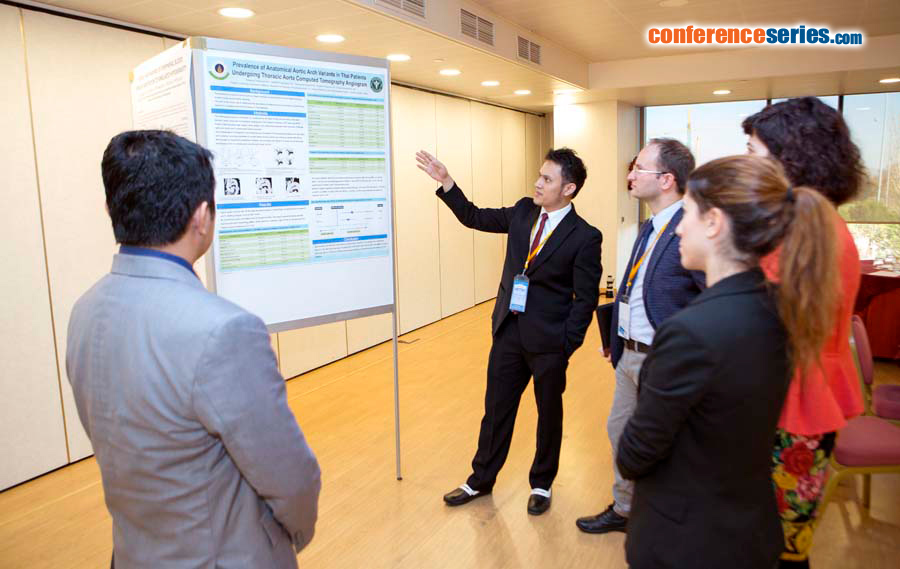
Nattapong Thaiyanurak
Siriraj Hospital, Thailand
Title: Prevalence of anatomical aortic arch variants in Thai patients undergoing thoracic aorta computed tomography angiogram
Biography
Biography: Nattapong Thaiyanurak
Abstract
Introduction: Type 3 aortic arch is a major predictor of neurological adverse events during carotid artery stenting. The aim of study was to determine the prevalence of different aortic arch types and predictors for aortic arch type 3 in Thai patients.
Methods: Data were analyzed on 250 retrospectively enrolled patients who underwent thoracic aorta computed tomography angiogram (CTA) between February 2013 and July 2015. Patient data including age, height, body weight, and underlying diseases were reviewed. Two independent investigators comprehensively evaluated CTA studies to identify aortic arch type and variants, including variable carotid artery branch points according to preset definitions.
Results: Type 2 arch (n=144,57.6%) was the most common morphologic variant in followed by type 3 (n=77,30.8%) and type 1 arch (n=29,11.6%). An anomalous aortic arch was found in 20 patients (8%). The most frequent anomaly was the bovine arch branching pattern, where there is a common origin of the innominate and left common carotid arteries (n=17,7%). Compared to simple arch (normal type 1 and 2), factors like older age (70.5years±13.6vs.61.8years ±16.6,p<0.001), lower body weight (56.9kg±15.2vs.62.9kg±14.5,p=0.002), lower body-mass index(BMI)(21.7±4.5vs.23.7±4.8,p=0.001), lower body surface area(BSA)(1.59m2±0.23vs.1.67m2±0.22,p=0.005) and lower glomerular filtration rate(ml/min /1.73m2)(67.5±26.5vs.75.2±26.6,p=0.028) were associated with more complex arch (type 3 and variants). Multiple logistic regression analysis demonstrated that age ≥ 65 years (OR=2.98,95%CI 1.65-5.38,p<0.001) and BMI ≤ 21kg/m2 (OR=2.40,95%CI 1.38-4.19,p=0.002) were predictor variables for complex arch.
Conclusions: Type 2 arch was the most common variant. We found that age ≥ 65 years and BMI ≤ 21 kg/m2 were strong predictors of complex arch.







